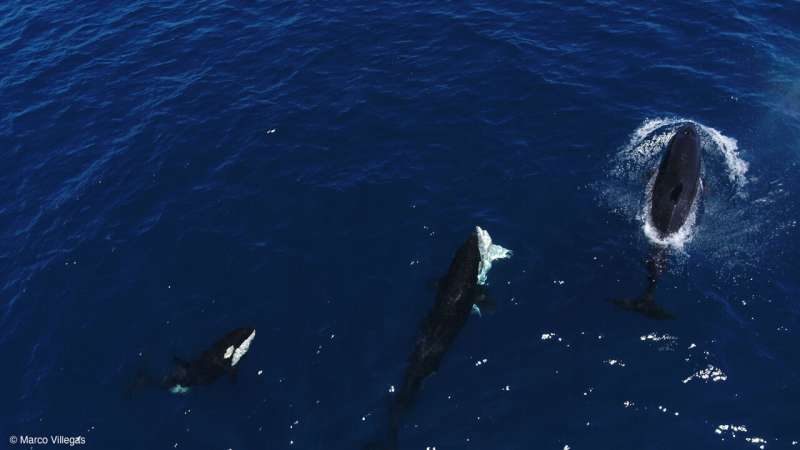A specialized pod of orcas in the Gulf of California has been observed hunting young great white sharks, employing a unique technique that involves flipping the sharks upside down to access their nutrient-rich livers. This behavior, documented in a recent study published in Frontiers in Marine Science, highlights a potentially increasing predation pattern on juvenile sharks by orcas, known scientifically as Orcinus orca.
Researchers from various institutions, led by Erick Higuera Rivas, a marine biologist and project director at Conexiones Terramar and Pelagic Life, recorded two separate hunting events where the orcas targeted juvenile great whites. The first hunt occurred in August 2020, during which five orcas successfully turned a juvenile white shark upside down and extracted its liver. A similar event was documented in August 2022, confirming the orcas’ technique and cooperative hunting strategies.
Advanced Hunting Techniques of Orcas
The method by which orcas incapacitate their prey is referred to as tonic immobility. This state is induced by turning the shark upside down, which alters its awareness of its surroundings, rendering it defenseless. Higuera explained, “This temporary state renders the shark defenseless, allowing the orcas to extract its nutrient-rich liver and likely consume other organs as well, before abandoning the rest of the carcass.”
The observations indicate that younger sharks, lacking the survival experience of adults, may be more susceptible to these predatory tactics. Dr. Salvador Jorgensen from California State University noted, “Adult white sharks react quickly to hunting orcas, completely evacuating their seasonal gathering areas and not returning for months. But these juvenile white sharks may be naive to orcas.”
The pod responsible for these hunts, known as Moctezuma’s pod, has previously been observed targeting other marine species, including rays and bull sharks. This adaptability may have contributed to their success in hunting great whites, as they learn and refine their techniques over generations.
Environmental Changes and Orca Diets
The changing dynamics of the Gulf of California, particularly shifts in the distribution of white shark nursery areas, may have provided new hunting opportunities for orcas. Climate phenomena, such as El Niño, are believed to have altered the habitats of juvenile white sharks, increasing their presence in this region. Each new cohort of juveniles may represent a seasonal vulnerability for the orcas as they adapt their diets in response to environmental changes.
Despite the significant findings, researchers emphasize the need for further investigation. A comprehensive survey of the orca population and their dietary habits will clarify whether these hunts are a regular occurrence or if they specifically target juveniles when available. Dr. Francesca Pancaldi from the Instituto Politécnico Nacional highlighted the challenges of this research, stating, “Fieldwork is expensive and orca hunts are unpredictable.”
The implications of these findings extend beyond understanding orca behavior; they could influence conservation strategies aimed at protecting critical habitats for both orcas and white sharks. As scientists gather more data, they aim to identify essential habitats and develop management plans to mitigate human impact on these apex predators.
The ongoing research into the interactions between killer whales and juvenile white sharks underscores the complex dynamics of marine ecosystems and the adaptability of species in the face of environmental changes. The study, titled “Novel evidence of interaction between killer whales (Orcinus orca) and juvenile white sharks (Carcharodon carcharias) in the Gulf of California, Mexico,” is a critical step in understanding the evolving relationships in oceanic food webs.







